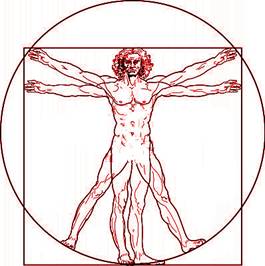The Matter of Theology – Worldviews
A worldview* is the picture of reality we humans hold at a deep – even unconscious – level. Most of us have a worldview that we received very early in life, passed on by our families and our culture.
A worldview influences more than our beliefs; it also influences our actions. For instance:
For centuries now, many people have pictured the world as a machine. If people see the world as a machine with various parts, then a part can be replaced when it breaks down. (If a forest is cut down for its wood, the lumber company can just move on to another forest.) If people see the world as a machine, they will see human beings as the machine’s operators. (The owner of a forest has the right to decide where to cut, how to cut, and what to leave on the ground when the operation is done.)
Today some people are picturing the world as an organism, or a body. If people see the world as a body, its parts organically related, then they realize the parts can’t be easily replaced. (Even when today’s surgeons replace a heart or a lung, everyone is aware that the organ came from another human.) If people see the world as an organism, they will begin to see human beings as an integral part of a planet which is alive, finite, and fragile.
Sallie McFague thinks most people in our contemporary culture still see the world as a machine. She points out that the negative results of the machine worldview, and the actions that accompany this worldview, are now becoming evident in every ecosystem on our planet – including two-thirds of the world’s people.
McFague argues that the organism worldview is closer to the reality of our planet, and healthier for all its inhabitants. In this worldview we humans are part of an organic whole – and we are the conscious part, responsible for learning how to make it flourish.
If we humans began to understand the world as an organism, we would begin to overcome our denial of our planet’s challenges. We might also become aware of our tendency to draw a hard line between humans and nature.
The human species is just one species among millions of others. We humans and the natural world are profoundly linked, not only in our ancestry but also in our dependency on the world’s ecosystems.

Leonardo Da Vinci’s ‘Vitruvian Man’
Is this our unconscious worldview?
Leonardo da Vinci’s famous drawing shows a male figure in a circle, with arms and legs outstretched to the four corners of the cosmos. The image reflects Da Vinci’s belief that the mathematics of human anatomy is related to the structures of the natural world.
Sallie McFague suggests that Da Vinci’s ‘man’ expresses a Western worldview – a view in which man’s form is imposed all the way to the four corners of the earth, to the point that human beings dominate the entire planet.
McFague says if you yourself fit into Da Vinci’s picture of a stereotypical human being, you will feel at home in Western culture. But wherever you don’t fit the picture can open a new window – a wild space* through which you can view the world from a different perspective.
We middle-class North Americans (even females) fit Da Vinci’s drawing fairly well, but most of us have some ‘wild space’ as well. It’s that ‘wild space’ in each of us – whatever doesn’t fit into the stereotype – that can question our culture’s assumptions about ‘the good life.’
If we can free ourselves, even a little, from the standard worldview and allow our own ‘wild space’ to emerge, we may begin to realize how unjust the picture is: Da Vinci’s man – with arms and legs spread out over the planet – is not related to nature (or to other humans), but superimposed over it (and them).
In fact, the representative human being of our time is probably a poor, third-world woman of color. For this woman and many others, the relationship to the natural world and to other human beings is one of increasing loss.
Sallie McFague asks: Are we silently accepting the traditional model, and what the model is doing to the planet and other people? We can and should live within a new model of human life on our planet.
Do worldviews affect our behaviors?
Drivers in California are supposed to stop for pedestrians at crosswalks, and researchers at the University of California, Berkeley discovered that nearly 90% of drivers do stop. But the study also found that people who drive luxury cars like BMWs stop only 50% of the time. In multiple experiments, wealthy people were found to be more likely to cheat than poor people.
(PBS Newshour, June 21)
* See definitions

http://www.pbs.org/wgbh/nova/physics/hunting-hidden-dimension.html
Thanks to Stef for loaning me this documentary. I think others would enjoy it as well. It fits with the discussion. Profound new way of seeing the world. Studying a forest in a single leaf!
This world viewpoint as organic and a shift from North American thinking as the world as mechanic is intriguing. Yes, most of us turn on the faucet and see water and many don’t think of it as a precious (nonreplacable) resource. I like this shift in thinking and feel it is much more ethical and responsible!